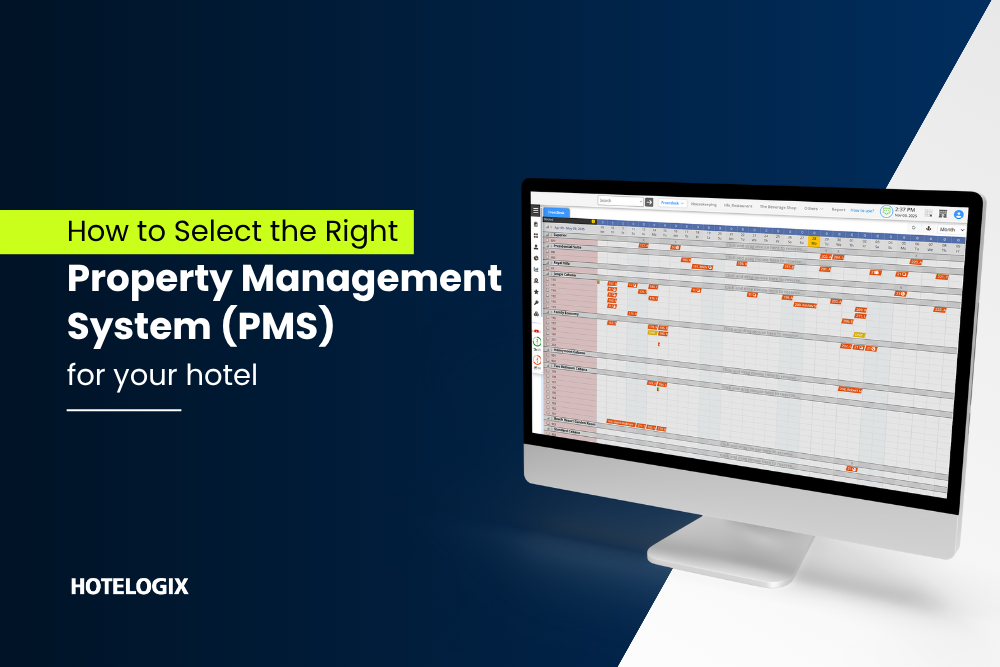Travel and tourism is among the fastest growing industries of the 21st century. Few hoteliers today would argue with that. Global tourism numbers are growing and new visitor trends are emerging each year. Digital tools like the PMS and the CRM have consequently seen increased deployment around the world, and to good effect. With these systems, establishments began to experience the effects of software-enabled organization and automation.
That’s why the Internet of Things (IoT) has filled hoteliers world-wide with expectant anticipation. Unlike most industries where the viability of new technology is first reviewed before any experimental phase can even be considered, hassled hospitality professionals are always on the lookout for anything that can further simplify management and improve efficiency.
There’s a deeper underlying reason for this. The inescapable reality is, hospitality is one of the few industries in which the consumer’s own physical presence is a critical component of the sales-cycle. Working so closely with a live consumer isn’t like working with a product. The margin for error is much lower and things that do go wrong can spiral out of control.
Let’s take a look at some of the major influences that the IoT can have on hotel operations.
A Whole New World Of Automation –
Automation is the word on most hoteliers’ lips today and it should be. Properties have witnessed unprecedented efficiency with the help of a PMS by simply mechanizing most of their repetitive tasks such as night auditing and reservation management. However, there’s a limit to just how many processes the hotel can automate. That limit is determined by the number of devices & processes that can be controlled by the property’s PMS. With IPv6 deployment reaching 10% and estimated to more than double by 2020, hotels will be able to assign IP addresses to almost any device. This will give the PMS a lot more authority within the property.
Within such a setup, the possibilities for automation are endless! Establishments are no longer restricted to automating only repetitive tasks. Managers can now anticipate even infrequent occurrences and prepare the PMS to take action when required. For instance, a heater encountering any problems would be able to transmit a message to the manufacturing company. This would ensure timely servicing before any serious malfunction.
Automation like this can have a massive impact on the guest experience as well. Modern day PMSs are capable of creating guest profiles that record visitor preferences. This enables the hotel manager to replicate those conditions the next time the guest visits. Most of these preferences are selected on digital appliances and gadgets such as televisions, thermostats and so on. By directly communicating with these soon-to-be ‘connected’ devices, the PMS will be able to take over this responsibility from the manager. Curtains that draw themselves in the morning, rooms that can detect a guest going to bed before playing ambient music and other such intuitive experiences could be on the way to becoming the norm, not the exception.
Better Control over Power Management –
Energy management has always been a problematic area for hospitality businesses. Even with the implementation of many cost-cutting measures, the sheer number of electrical devices present in the building makes it almost impossible for managers to efficiently track the power consumption of each one. As a result, hotels often face massive energy bills even during the off-peak months. This problem is further complicated when it comes to occupied rooms. Hotels have little control over power once a guest has checked into their room. Apart from hanging energy-conservation placards, there’s not much that can be done. The IoT can turn out to be a game-changer for hotels in this area. Motion sensing lights and HVAC devices have been around for a while now and while they do control power output to the devices quite efficiently, the microwave or infrared emitting hardware used to detect movement does need to always remain active. With connected devices, a single device detecting activity – or the lack of it – can alert a host of other devices. This would then set off a preordained chain of events. For instance, a guest leaving his room would trigger a series of signals that in turn would activate the lights and summon the elevator; while also deactivating certain devices left on within the room, such as the television. Power outlets could also be assigned certain energy outputs as part of the room rate. Power consumption beyond these predetermined parameters could then be added to the guest’s room charge. This gives hotels the upper hand in controlling energy usage within occupied rooms without forcing the guest’s hand and impairing their experience.
By setting up a chain of command for devices in the hotel, equipment in every single department of the property would be able to optimize their power usage – resulting in huge savings for the establishment.
Understanding the IoT & Its True Potential
Despite these promising applications, the real excitement about the IoT lies in the unknown – in its potential. To better understand why, we’ll first need to separate the fact from fiction. While I do believe that the IoT is going to be nothing short of a revolution in the way the world’s computing entities work, it’s not entirely new technology. In fact, companies have been using it for years. Some connected devices have even been around for far longer than the internet itself, like the television remote!
To truly appreciate the value of something, we need to understand it first. Otherwise we’re just allowing ourselves to get carried away by the hype. A number of leading IT organizations have come out with massive projections for the future of the IoT in terms of financial savings and the number of connected devices – unrealistic projections can distort expectations and make it difficult for consumers to comprehend the true potential of this brilliant technology.
As IPv6 deployment continues to rise and more devices are assigned unique IP addresses, the resulting interactions between these devices will forge an environment in which all connected devices can share information and build new connections. This ‘neural’ mapping between devices will replicate the network established between websites in the structure of the internet, or on a more intimate level, the human brain.
It is this collective gathering of devices, connections, and the environment in which they reside that form the foundation of what the IoT really is – a world of devices, controlled by devices (with some human input during the early stages).
This is what makes the IoT so exciting for hoteliers. Every single industry in existence will soon be simplifying operations by employing connected devices. This will extend the reach of hospitality businesses far beyond any current technology lets them. Hotels will be able to tie-up with industries as diverse as agriculture & education, simplifying interactions between companies. Connected devices outside and within hospitality would also be capable of synchronizing and working together to streamline guests’ journeys within a cross-industry ecosystem.
It’s safe to say that 2016 will be the year in which we begin to see this exciting technology make its mark on global hospitality.






